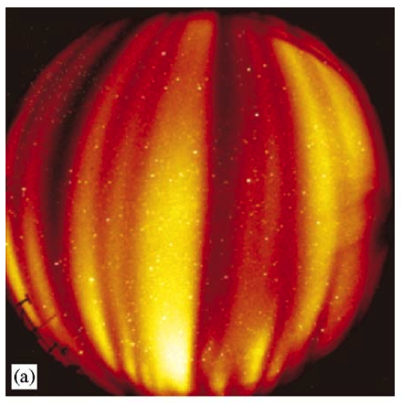Daytime:
High-energy photons from the sun have the potential to ionize atoms and molecules in the Earth’s upper atmosphere and as a by-product, create relatively fast-moving electrons (called photoelectrons). These photoelectrons collide with neutral atoms and molecules in the upper atmosphere, exciting them and causing them to emit light. The FUV instrument measures the altitude profile of O and N2 in the upper atmosphere by observing the brightness of 2 emissions produced in this manner – one emission line from O at 135.6 nm and one emission band from N2 at around 157 nm.
Nighttime:
O+ ions in the Earth’s ionosphere are produced during the day as solar radiation ionizes O atoms. After sunset, no more O+ are produced in this manner, but some O+ remains from the daytime. When this O+ recombines with an electron, it can emit light at 135.6 nm, in the far ultraviolet range and is measured by the ICON FUV instrument.
The distribution of O+ at nighttime is often very uneven, but is generally aligned with the Earth’s magnetic field (see the alternating bright & dark regions in the figure below). To capture this, the ICON FUV instrument has a turret which moves its field of view such that it is always looking parallel to the Earth’s magnetic field – up and down one of these features.

Ground-based image of an O
+ plasma structure taken from the magnetic equator. The field-aligned structure (vertical in this image) can be clearly seen. After Makela, [2006].